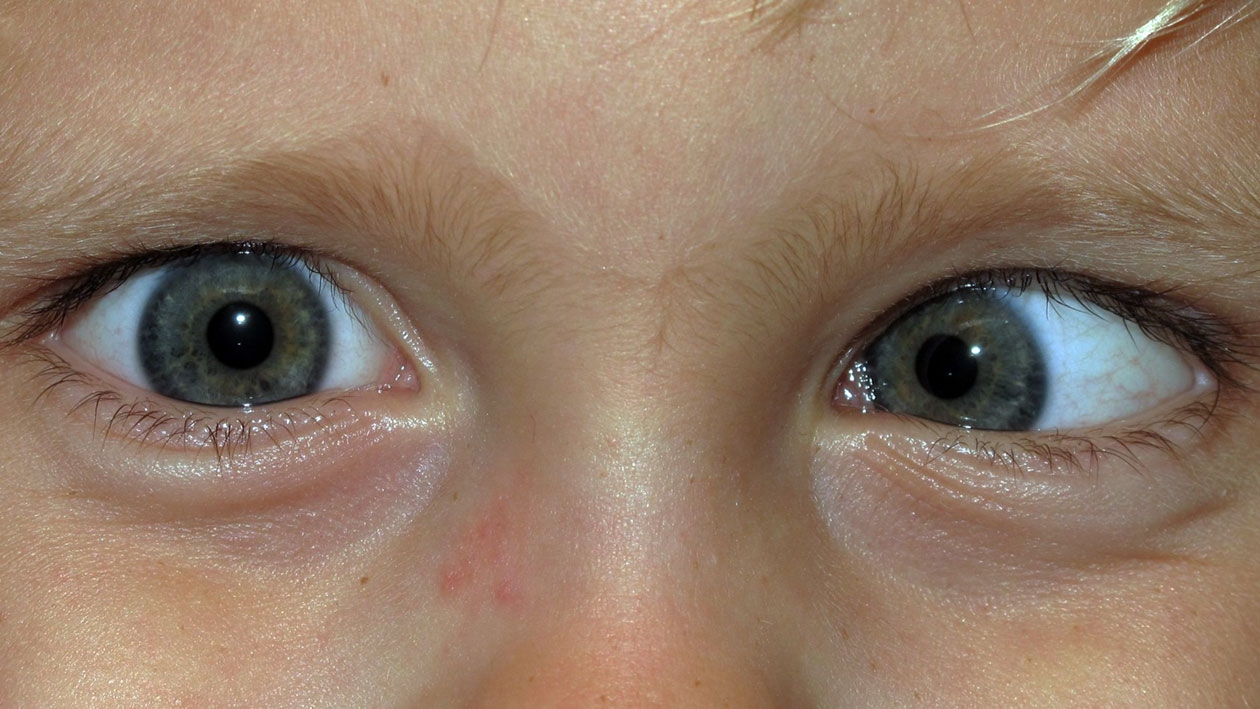What is Strabismus?
The eyes rely on a complex system of muscles to move in perfect coordination. Strabismus occurs when these muscles fail to work together properly, causing misalignment. One eye may look straight ahead while the other turns inward, outward, upward, or downward. This disrupts binocular vision and affects depth perception.
The brain plays a central role in vision processing, combining input from both eyes to create a single, three-dimensional image. When strabismus interferes with alignment, the brain may receive conflicting signals. In children, it often suppresses the image from the misaligned eye to avoid double vision, which can lead to amblyopia (lazy eye). In adults, the brain struggles to reconcile inconsistent input, resulting in persistent double vision.
Beyond appearance, untreated strabismus affects focus, coordination, and overall visual function. Understanding the underlying causes and treatment options helps restore visual balance and prevent long-term complication

What are the different types of Strabismus?
Strabismus, commonly known as crossed eyes, is a misalignment of the eyes that disrupts binocular vision. It is categorized based on the direction of deviation, underlying causes, and other clinical characteristics. Below is a detailed breakdown of its types:
- Esotropia: Inward deviation of one or both eyes, often linked to farsightedness (hyperopia), muscle imbalances, or neurological issues. Subtypes include:
- Congenital/infantile esotropia (appearing before 6 months).
- Accommodative esotropia (triggered by focusing effort).
- Exotropia: Outward deviation, frequently associated with nearsightedness (myopia) or muscle weakness. It can be intermittent (worsening with fatigue) or constant.
- Hypertropia: Upward deviation of one eye, often due to superior oblique muscle palsy or thyroid eye disease.
- Hypotropia: Downward deviation, typically caused by inferior rectus muscle restriction or trauma.
- Torsional Strabismus: Rotation of the eye around its anterior-posterior axis (e.g., incyclotorsion or excyclotorsion), often linked to cranial nerve palsy.
- Comitant (Concomitant) Strabismus: The angle of deviation remains constant in all gaze directions. Common in childhood strabismus.
- Incomitant (Noncomitant) Strabismus: The deviation varies with gaze direction, indicating muscle paralysis (e.g., cranial nerve palsies) or mechanical restrictions (e.g., orbital fractures).
- Includes “alphabet patterns” (A-, V-, or X-pattern strabismus), where divergence/convergence changes with upward or downward gaze.
- Manifest Strabismus (Tropia): Constant misalignment visible without covering either eye.
- Latent Strabismus (Phoria): Misalignment only apparent when one eye is covered, often causing eye strain.
- Alternating vs. Unilateral:
- Alternating: Either eye can deviate (better prognosis for binocular vision).
- Unilateral: Only one eye consistently deviates, risking amblyopia (“lazy eye”).
Etiological Classifications
- Congenital/Infantile: Present at birth or developing within the first 6 months (e.g., congenital esotropia).
- Acquired: Develops later due to trauma, neurological conditions (e.g., stroke), or systemic diseases (e.g., thyroid disorders).
- Secondary: Arises from vision loss (e.g., cataracts) or surgical overcorrection (consecutive strabismus).
Special Types
- Pseudostrabismus: Apparent misalignment due to facial anatomy (e.g., epicanthal folds), not true strabismus.
- Paralytic Strabismus: Caused by cranial nerve palsies (e.g., sixth nerve palsy leading to esotropia).
- Restrictive Strabismus: Mechanical limitations from orbital trauma or muscle fibrosis (e.g., Brown syndrome).
What are the causes of Strabismus?
Strabismus, or eye misalignment, arises from various factors affecting eye muscle control, nerve signalling, or brain coordination. Here’s a breakdown of the primary causes:
Neuromuscular and Brain-Related Factors
- Muscle/nerve dysfunction: Weakness or imbalance in the eye muscles, disrupted nerve signals (e.g., cranial nerve palsies), or faulty brain coordination can prevent proper eye alignment.
- Brain conditions: Strokes, brain tumours, or traumatic brain injuries in adults often disrupt neural pathways controlling eye movement, leading to acquired strabismus.
Genetic and Developmental Causes
- Family history: Approximately 30% of cases have a genetic link, with higher risk if close relatives have strabismus.
- Developmental disorders: Conditions like Down syndrome, cerebral palsy, or Apert syndrome are frequently associated with eye misalignment.
Refractive Errors
- Uncorrected hyperopia (farsightedness): Excessive focusing effort in children with high hyperopia can trigger accommodative esotropia (inward eye turn).
- Large refractive differences: Significant prescription imbalance between eyes may cause one eye to dominate, leading to misalignment.
Trauma and Physical Factors
- Prematurity: Preterm birth increases the risk of esotropia by fivefold, often due to disrupted retinal development or oxygen therapy complications.
- Injury: Head trauma, orbital fractures, or birth injuries (e.g., forceps delivery) can damage eye muscles or nerves.
Systemic Diseases
- Endocrine disorders: Thyroid eye disease (Graves’ disease) causes muscle inflammation, leading to vertical misalignment.
- Neurological conditions: Myasthenia gravis, Guillain-Barré syndrome, or botulism impair nerve-muscle communication.
- Diabetes: Can cause acquired paralytic strabismus due to nerve damage.
Infections and Other Triggers
- Viral/bacterial infections: Meningitis or herpes simplex may inflame nerves controlling eye movement.
- Childhood illnesses: Rubella or retinoblastoma (eye cancer) are rare but documented causes.
Adult-Onset Strabismus
Common triggers include strokes, head injuries, or decompensation of childhood strabismus. Unlike children, adults often experience double vision due to the brain’s inability to suppress the misaligned eye.
What are the symptoms of Strabismus?
Strabismus, characterised by eye misalignment, presents with distinct symptoms and requires specific detection methods. Here’s a comprehensive overview:
Visible Eye Misalignment
- One eye turns inward (esotropia), outward (exotropia), upward (hypertropia), or downward (hypotropia).
- Misalignment may worsen with fatigue, illness, or specific gaze directions.
Compensatory Behaviors
- Head tilting or unusual head positions to align vision.
- Closing one eye (especially in bright light) or squinting to reduce double vision.
- Clumsiness due to impaired depth perception and poor hand-eye coordination.
Visual Disturbances
- Double vision (common in adults).
- Blurred vision or difficulty reading.
- Eye strain, headaches, or dizziness.
Associated Symptoms
- Anxiety or panic attacks in visually stimulating environments (e.g., crowded spaces).
- Motion sickness or vertigo due to conflicting visual signals.
How is Strabismus detected and diagnosed?
Accurate diagnosis of strabismus is crucial for effective treatment and management. This section outlines the key methods used for detection and diagnosis, ranging from traditional clinical examinations to emerging automated screening techniques.
Clinical Examinations
- Cover Test: Detects manifest strabismus by observing eye movement when one eye is covered.
- Brückner Test: Uses a direct ophthalmoscope to identify asymmetrical red reflexes, indicating misalignment.
- Prism Tests: Measure the angle of deviation (e.g., prism alternate cover test).
Binocular Function Tests
- Stereotests: Assess depth perception (e.g., random dot stereotests).
- Hirschberg Test: Evaluates corneal light reflection symmetry.
Differentiation from Pseudo-Strabismus
- Infants with wide nasal bridges or epicanthal folds may appear cross-eyed (pseudo-strabismus), which resolves with age.
Automated Screening
Emerging methods use digital images or AI to detect misalignment, aiding remote or underserved areas.
When to Seek Evaluation
- Persistent eye misalignment beyond 4 months of age warrants assessment.
- Routine screenings at 6 months, 3 years, and preschool age help detect strabismus early.
Treatment Options for Strabismus
Treatment options for strabismus depend on its type, severity, and underlying cause. Below is a comprehensive overview of the available treatments:
Non-Surgical Treatments
Corrective Lenses
- Glasses or contact lenses can correct refractive errors contributing to strabismus, such as farsightedness (hyperopia).
- Prisms may be incorporated into glasses to realign images and reduce double vision.
Eye Patching
Used primarily in children with amblyopia (“lazy eye”) to strengthen the weaker eye by covering the stronger one.
- A non-invasive approach involving supervised eye exercises to improve binocular vision, coordination, and depth perception. It is particularly effective for intermittent exotropia and other functional strabismus types.
- Techniques include convergence exercises, focus shifting, and virtual reality-based therapies like Vivid Vision.
Botulinum Toxin (Botox) Injections
Botox is injected into overactive eye muscles to temporarily relax them and realign the eyes. It is often used when surgery is contraindicated or as a temporary measure.
Atropine Drops
Occasionally used to blur vision in the stronger eye, encouraging the weaker eye to work harder (alternative to patching).
Surgical Treatments
Strabismus Surgery
The most common treatment for significant or constant misalignment. It involves loosening, tightening, or repositioning extraocular muscles to align the eyes.
Surgery is not limited to children; it is also effective in adults, improving both alignment and psychosocial outcomes.
Combination Approaches
Surgery may be followed by vision therapy or corrective lenses for optimal results.
Alternative Approaches
In some cases, mild strabismus may not require immediate intervention (“watchful waiting”), especially if it does not cause functional issues.
The choice of treatment depends on individual factors such as age, symptoms, and prior treatments, making personalised care essential for effective management.
BOOK AN APPOINTMENT TODAY
Tired of squinting and straining? Experience the comfort and clarity of healthy vision.
